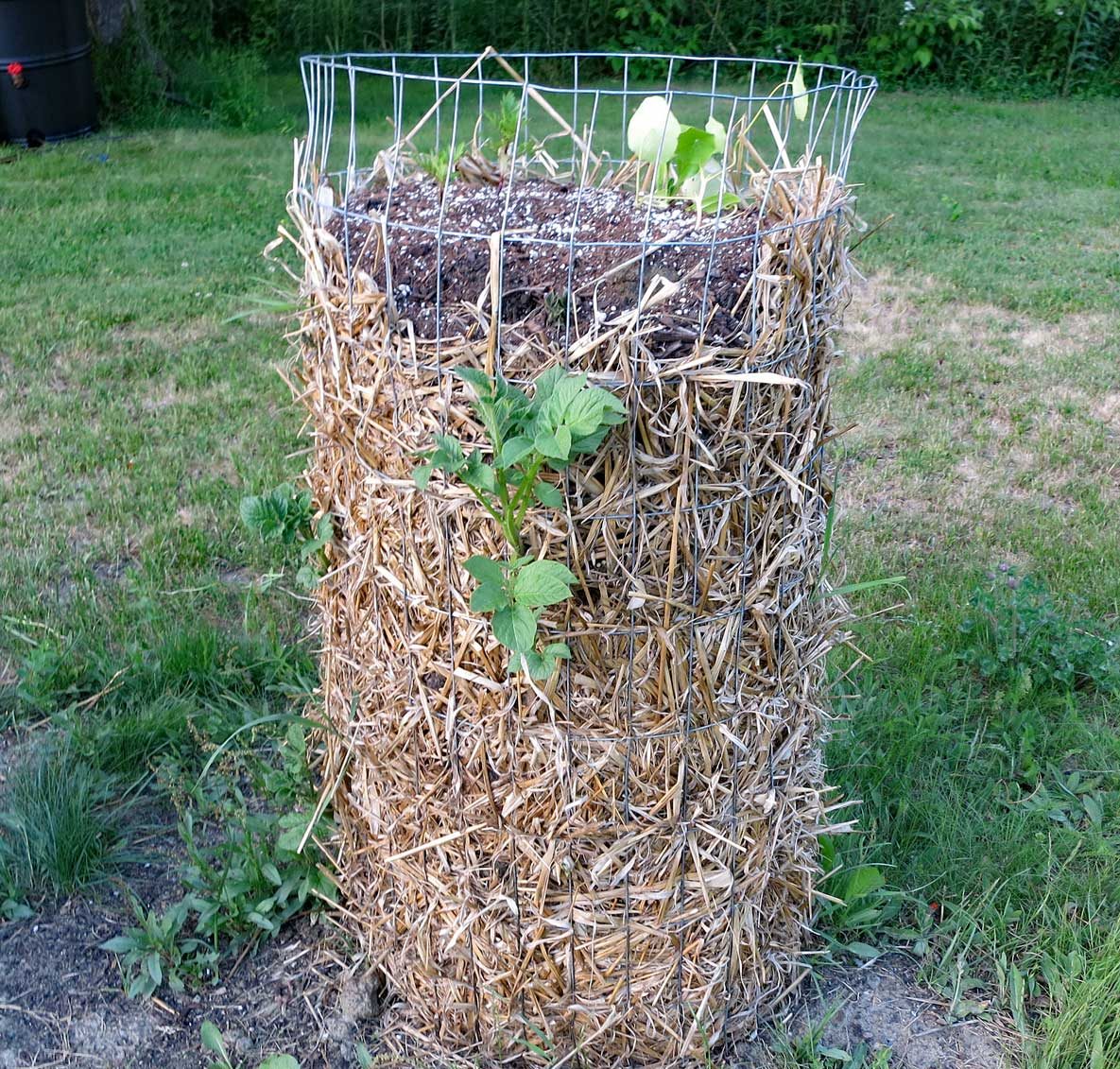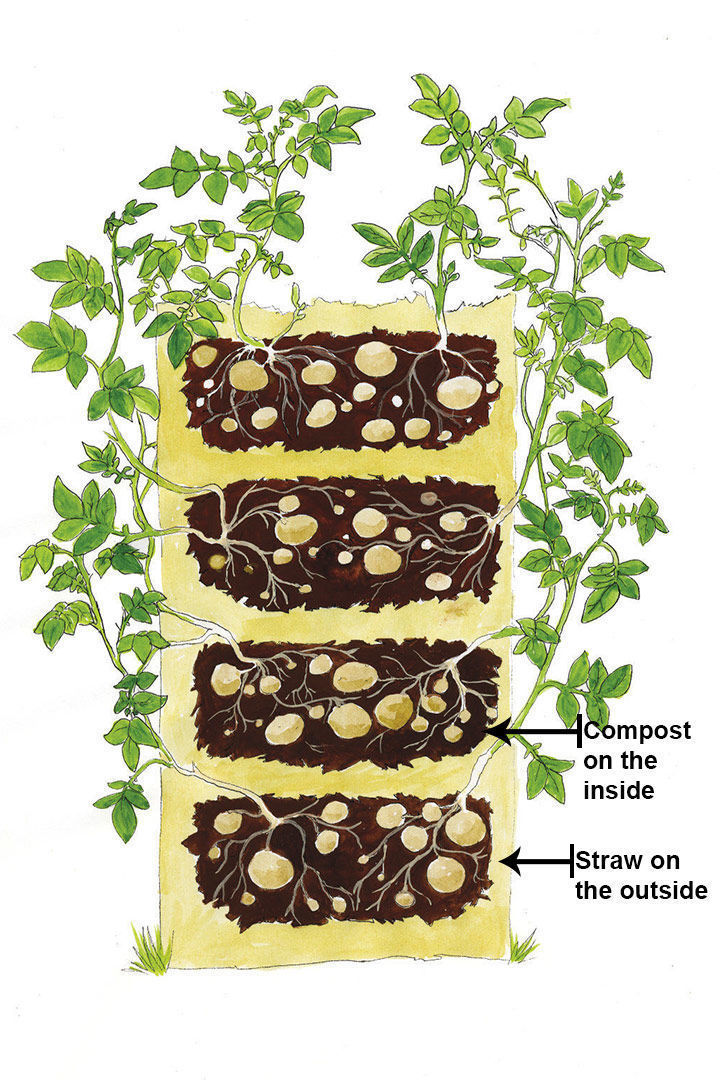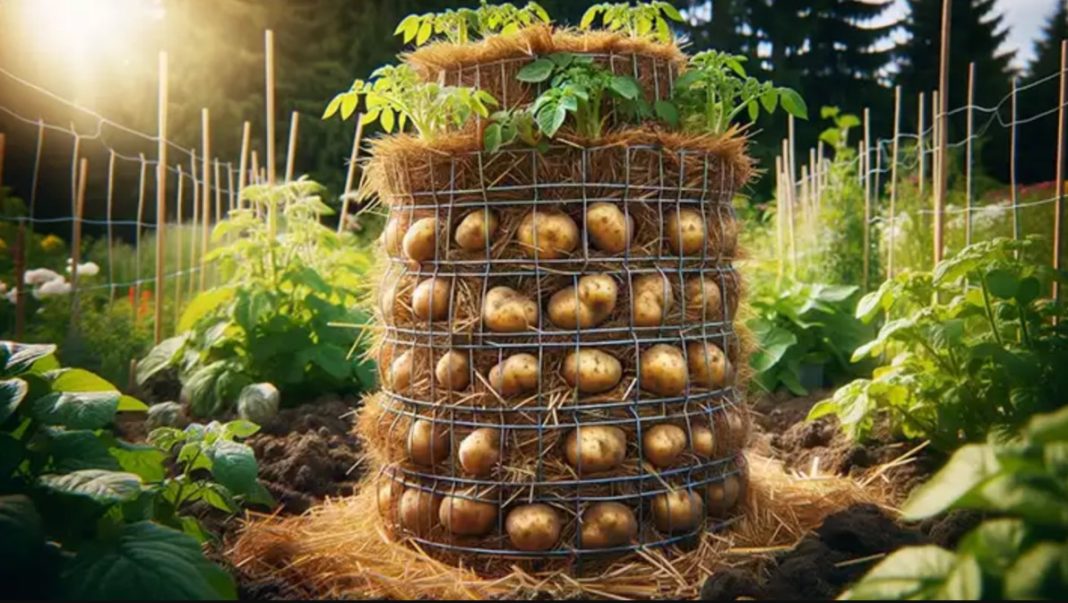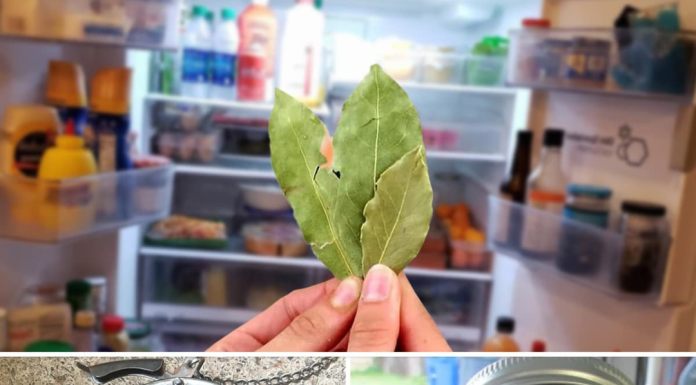Growing potatoes in a limited space can be challenging, but with a potato tower, you can maximize your yield in a compact area. Potato towers, especially those using straw, are an excellent solution for urban gardeners or those with small gardens. Here’s an in-depth guide on how to build one, along with its benefits.


Benefits of a Potato Tower
Space Efficiency: Potato towers require minimal ground space, making them perfect for small gardens or balconies.
Ease of Harvest: Harvesting potatoes from a tower is easier than digging them out of the ground.
Reduced Pest and Disease Risk: Elevating the growing medium helps protect the crop from soil-borne pests and diseases.
Improved Drainage and Aeration: The structure of a tower allows for better air and water flow, crucial for healthy potato growth.
Materials Needed
- Wire fencing or a large mesh cylinder
- Straw, preferably weed-free
- Compost and soil
- Seed potatoes
- Watering can or hose
- Gardening gloves
Step-by-Step Guide to Building a Potato Tower
1. Choose a Sunny Location :
Potatoes thrive in sunlight, so select a spot that receives at least 6 hours of direct sunlight daily.
2. Prepare the Tower Structure :
Cut a piece of wire fencing to create a cylinder about 2 to 3 feet in diameter and 3 to 4 feet high.
Secure the edges to form the tower.
3. Layer the Base :
Start with a layer of straw at the bottom of the tower for drainage.
Add a mix of soil and compost, about 6 inches deep.
4. Plant Seed Potatoes :
Place seed potatoes on the soil layer, with eyes facing upward.
Space them about 6 inches apart.
Cover them with another layer of soil and compost.
5. Continue Building Up :
As the potato plants grow, keep adding layers of straw around the sides of the tower and more soil-compost mix to cover the stems, leaving only the top few inches of the plant exposed.
This encourages more potatoes to form along the buried stems.
6. Watering and Care :
Water the tower regularly, keeping the soil moist but not waterlogged.
Avoid over-watering as it can lead to rot.
7. Harvesting :
Potatoes are ready to harvest once the foliage starts to yellow and die back.
Gently remove the straw and soil from the sides of the tower to access the potatoes.
Additional Tips
Choosing Potatoes: Use certified seed potatoes to reduce the risk of disease.
Tower Placement: If mobility is a concern, place the tower on a platform with wheels.
Monitoring for Pests: Regularly check for signs of pests and address them promptly to ensure a healthy crop.
Building a potato tower is a rewarding project for any gardener. It’s an innovative way to grow a staple crop in a limited space, with the added benefits of ease of care and harvest. By following these steps, you’ll enjoy a bountiful potato harvest that’s both efficient and enjoyable. Happy gardening!










